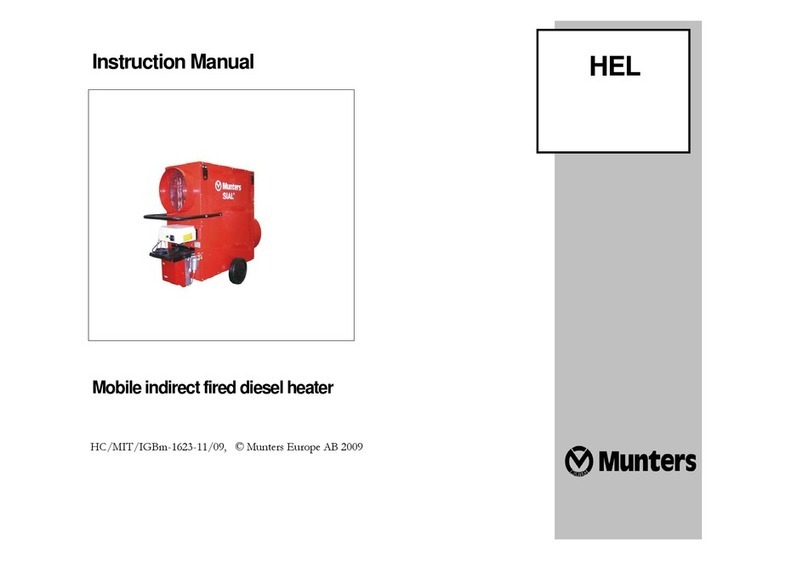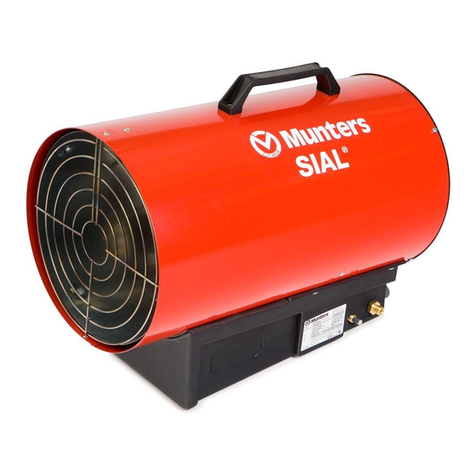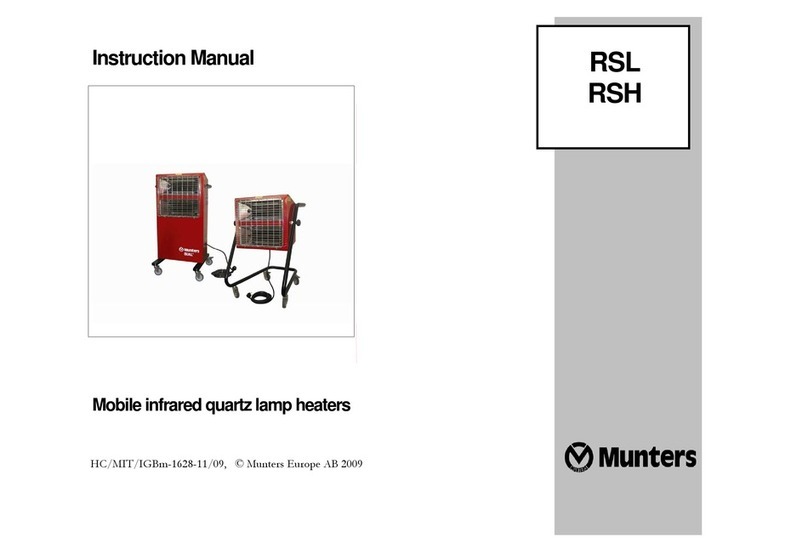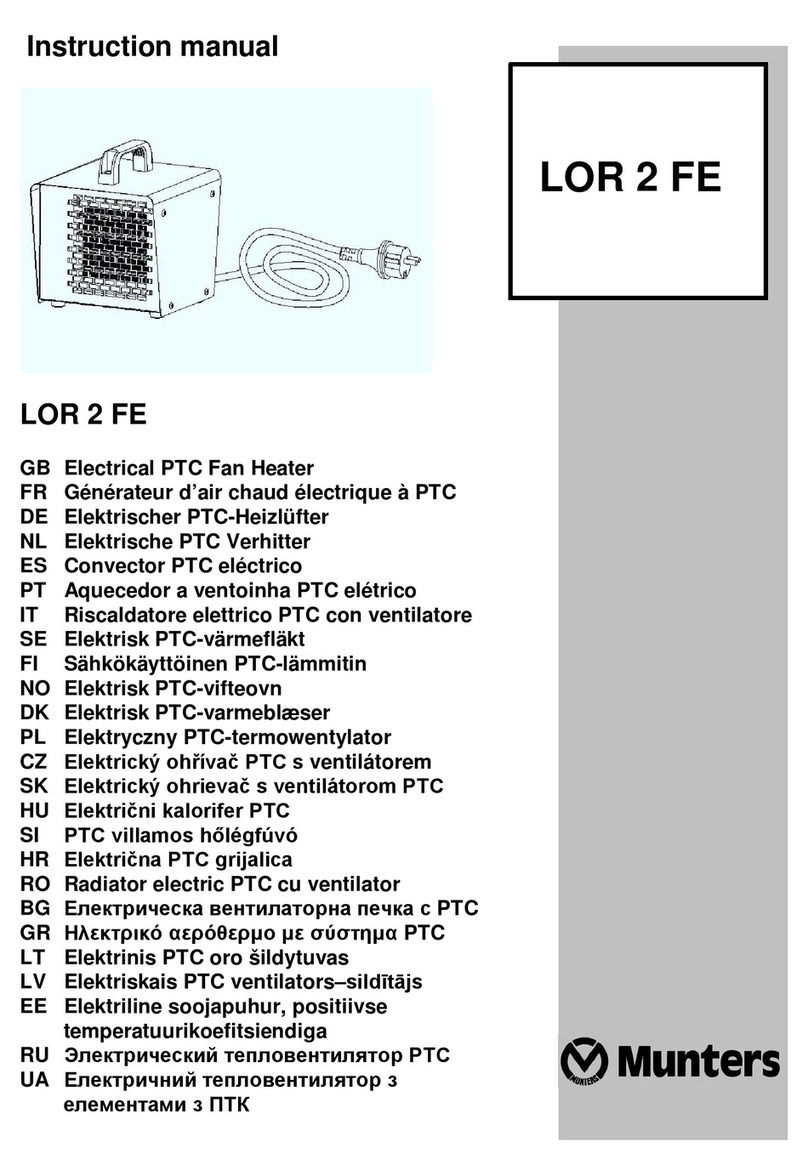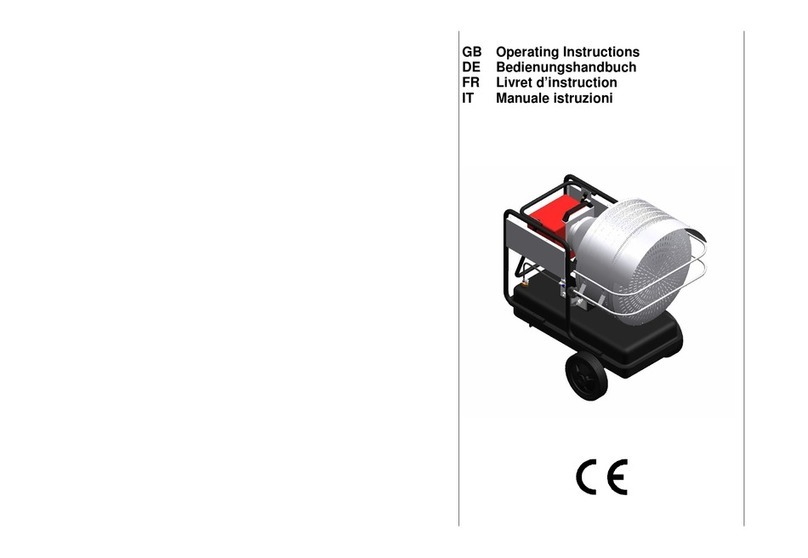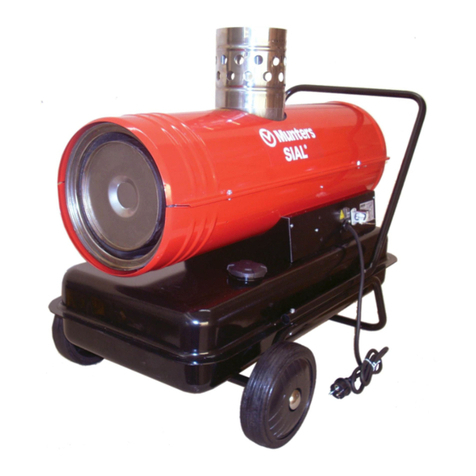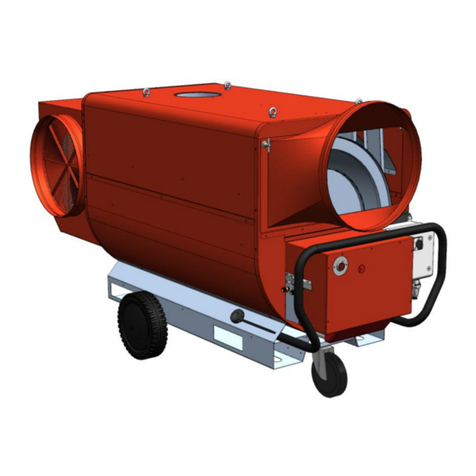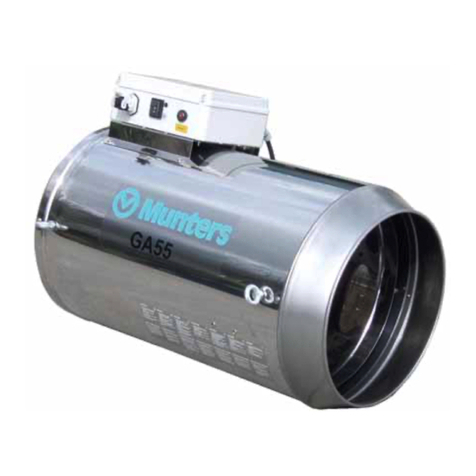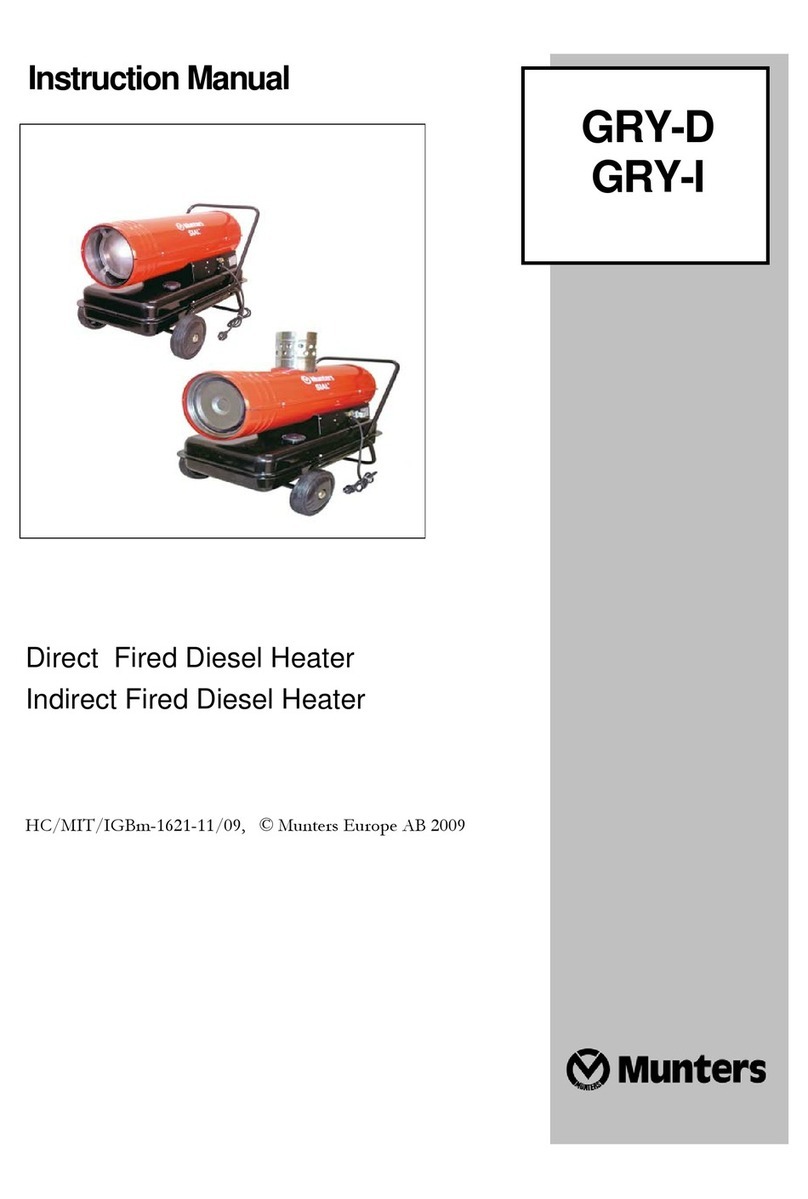8| © Munters AB, 2019
Loads may slip or fall if proper eye bolt assembly
and lifting procedures are not used.
5.2 External typical placement
In order to position the air heater in the proper way,
we recommend the users to employ skilled persons
with relevant education, training and/or experience,
acquainted with the climatic characteristics and/or
cultivation methods of the local area.
The following guidelines should be observed closely
when positioning the air heater externally of the
farm or greenhouse:
•placement of the air heater must comply with the
safety clearances (see fig.5);
•in case anchoring structure cannot be provided
then, placement of the air heater must be done on
a stable horizontal and flat surface;
•make sure the air heater are protected from
possible damage;
•placement of the air heater must be done under
cover, protected from elements of nature
including dust, frost, rain, snow and aggressive
contaminants;
•in case of exposure to extreme heat or frost the
installer must take the necessary precautions to
protect the air heater from possible damage.
The air heater must be located at a safe distance
form obstacles, structures, materials or other
combustible surfaces. The following safety
clearances should be applied (see fig. 5):
•1 m to front;
•2 m to rear;
•1.1 m to sides;
•1.1 m to top;
•1.5 m to ground.
For safety reasons, the following points must be
observed closely:
•do not place the air heater near objects that could
block or obstruct the air inlet;
•do not place the air heater near curtains,
tarpaulins, canvas or enclosure material that
could block the air inlet;
•do not keep the power cable near heat sources,
sharp edges, cutting or moving parts;
•do not allow the fuel pipe and/or electrical power
line to interfere with moving parts;
•keep the area above the air heater clear of debris
that could fall on the air heater;
•keep unauthorized personnel, children and pets
away for the air heater.
The external installation is usually done by placing
the air heater in a separate room of the farm or
greenhouse, and by connecting the air outlet to a
proper air duct (max 1.5 m long) which allows the air
heater to blow the hot air inside the building.
In order to operate safely and correctly the air
heater, the installer must accurately prepare proper
operating condition and supporting structure. It is
mandatory to prepare:
•proper ventilation opening in order to guarantee
the correct air flow (see Chapter 4);
•proper supporting structure (metal, concrete, etc.)
or anchoring structure in order to support the air
heaters weight during and after operation
(detailed information see Chapter 5.1);
•proper roof or ceiling in order to protect the air
heater from direct sun light and elements of
nature (snow, rain, hail, frost);
•proper insulation in order to protect the air heater
from extreme temperatures (see Chapter 4).
5.3 Connecting the exhaust pipe system
DANGER Exhaust emissions from the burner
contain carbon monoxide. Exposure to carbon
monoxide can cause death. Do not use the machine
indoors or in an enclosed area unless the air heater
is properly connected to the exhaust piping system,
according to local and national codes, and approved
by a heating engineer.
The GFn air heaters are indirect fired space
heaters, with closed combustion chamber. The
combustion fumes must be released into the
atmosphere by means of proper exhaust piping
system.
The exhaust piping system is available only on
request; it is not supplied as standard.
The following safety guidelines should be observed
closely when mounting the exhaust pipe system:
•the connection of the exhaust pipe must comply
with local and national regulations;
•the connection of the exhaust pipe must adhere
to all fire prevention regulations;
•positioning of the air heater according to Chapter
5.3 or Chapter 5.5 must be done in such manner
that the exhaust pipe system avoids excessive
bends, elbows and horizontal runs;
•mount or route the exhaust pipe in such manner
that avoids flammable materials;
•mount or route the exhaust pipe in such manner
that avoids contact with people or animals;
•when the air heater has been connected to the
exhaust pipe, this one must finish in vertical
section at least 0.6 m; sufficient draft must be
created to guarantee safe and proper functioning
of the air heater.
Burner performance and proper heating operation
depend on the exhaust pipe. Observe closely the
following guidelines:
•the exhaust pipe must avoid bends and
shortening diameters. The first 2 meters from the
heater should be free of curves or bends;
•an exhaust pipe must be connected for each air
heater. Do not connect two or more air heaters to
one exhaust pipe;
